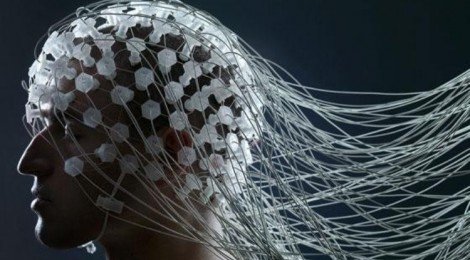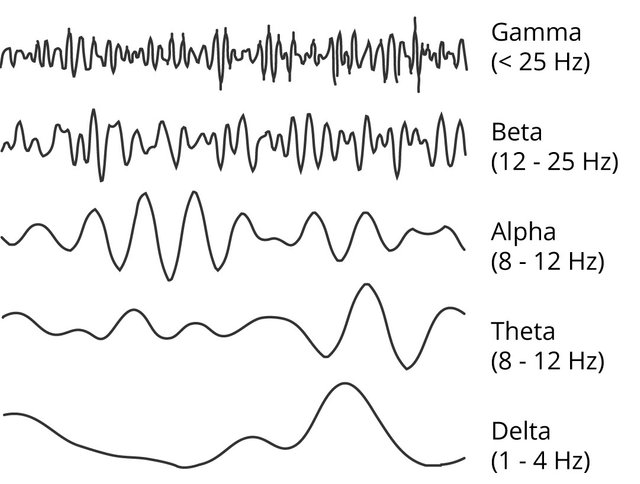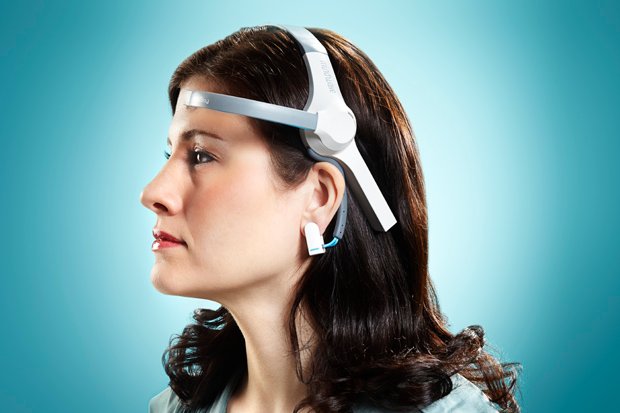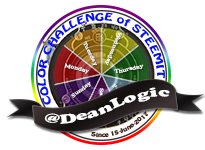Logic Coin : Part 1 - The EEG
I recently had a short discussion with @dragosroua, where I jokingly talked about creating a experimental cryptocurrency based off of thoughts. Well, the joke has blossomed into an actual thought experiment on how this would actually work. The first part would be figuring out how to validate a Proof of Thought (POT) in order to start the process of the Logic Coin being created.
To start, we need to determine the methods of recording thoughts. While we aren't to the point of the 1983 movie Brainstorm, where they were able to record visual thoughts and then let others experience those recorded thoughts, we can track some aspects of the brain's activities.
The way we track the brain, is through an EEG.

According to the May Clinic
An electroencephalogram (EEG) is a test that detects electrical activity in your brain using small, flat metal discs (electrodes) attached to your scalp. Your brain cells communicate via electrical impulses and are active all the time, even when you're asleep. This activity shows up as wavy lines on an EEG recording.
You might think that this was something that came about just recently. But, the first recorded EEG was done by Hans Berger in 1924. Just four years after the first radio station began broadcasting radio waves to our ears, Berger was tapping into the electronic waves in our head. Berger was watching Alpha waves, which are in the frequency range of 7.5–12.5 Hz. He also started studying Beta waves, when he noticed what he considered was alpha blockage as the awareness of the patient changed.
Since Berger's initial study, more waves are being studied.
Whenever your brain is in a certain state, the frequency patterns change – your brain kicks into gears.
- Delta (1 – 4 Hz). In sleep labs, delta waves are examined to assess the depth of sleep. The stronger the delta rhythm, the deeper the sleep. Interestingly, delta waves are only present in non-REM phases – when we’re not dreaming, for example.
- Theta (4 – 8 Hz). Theta is associated with a wide range of cognitive processing such as memory encoding and retrieval as well as cognitive workload. Whenever we’re confronted with difficult tasks (counting backwards from 100 in steps of 7, or when recalling the way home from work, for example), theta waves become more prominent.
- Alpha (8 – 12 Hz). Whenever we close our eyes and bring ourselves into a relaxed, wakeful state, alpha waves take over. Alpha is reduced with open eyes and drowsiness. Therefore, alpha coordinates multi-sensory processing, attention, and concentration. Biofeedback training often uses alpha waves to monitor relaxation.
- Beta (12 – 25 Hz). Over motor regions, beta frequencies become stronger as we plan or execute movements of any body part. Interestingly, this increase in beta is also noticeable as we observe bodily movements of other people. Our brain seemingly mimics their limb movements, indicating that there is an intricate “mirror neuron system” in our brain which is coordinated by beta frequencies.
- Gamma (> 25 Hz, typically 40 Hz). At the moment, gamma frequencies are the black holes of EEG research. Some researchers argue that gamma reflects attentive focusing and serves as carrier frequency to facilitate data exchange between brain regions. Others associate gamma with rapid eye movements, so-called micro-saccades, which are considered integral parts for sensory processing and information uptake.

Source : What is EEG (Electroencephalography) and how does it work?
Berger's study required direct attachment to the scalp and basically for the patient to be still while they recorded the readings. The processes for recording brain waves has improved and now they look like an odd looking headset. The basic issue is that the electrical waves are so low they need amplification to be read. As technology improves, it will be easier to amplify those signals and record them.

Depending on what you want to track you look at the different wave lengths and even not all of the wave lengths are understood. For Logic Coin, we would need to study Beta waves. You have been activating your Beta waves while reading this article.
On a side note, not only can we record brain waves, some believe that we can alter brain waves by transmitting tones on the frequencies of the brain waves. The idea is, by aligning your wave pattern to certain patterns, it will help you achieve balance and allow you to be more creative and other things.
Brain Sync audio programs deliver pure and precisely tuned sound frequencies to the brain to drive brain activity into high level states of mind. These are brain states known as Alpha for heightened creativity and deep relaxation; Beta for high focus and concentration; Theta for meditation, insight and memory; Delta for deep sleep and healing; and Gamma to increase cognition and improve IQ.
They have a demo sound for you to try out on Brain Sync.
And, there are people who believe the 528 Hz frequency can heal your DNA and do all sorts of magic.
But, for Logic Coin, we aren't going to get into that. For it to work, you need to think and we need to determine that you are thinking.





Hello, catching on reading :)
Ps: shouldn't a < 25 Hz be > 25 Hz with gamma waves?
Copied and pasted.
You wouldn't believe how many different ranges there. It was like, each site decided what the range was.
I really won't know the best Beta waves until I do some actual testing.
Over 20 Hz :)
Fun idea! .. Why is it called logic coin btw, instead of thought coin or something?
Something to do with my username. ;)
Oh! Right! Duh! 😄
The frequencies are an exciting subject with tremendous impact on the human being. Many tests have been done with frequencies for military use not for good ends I suppose. But in the field of health there is a huge field to improve our quality of life and even things that today seem like science fiction. I really like the idea of Logic Coin.
I guess with the advent of more and more portable technology, people have extra money to spend on crazy ideas that sometimes turn out to actually work.
Sounds pretty interesting, I'd try it out for a few coins. Haha, just a question.. so those with lower "brain function" would see less coins produced?
That would be the goal...more on that later.
Lol, I'm pretty sure this is going in an interesting way. Logic=currency... How else should it function. In a truly capitalist sense it's perfect.